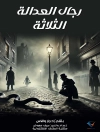INTPs are brilliant and always think outside the box, are highly observant and not interested in routine. In this book you will find seven short stories specially selected to please the tastes of the INTP. These are stories by renowned authors that will surely bring reflections, insights and fun to people with this kind of personality.
This book contains:
– The Interlopers by Saki.
– Meditations: Book Three by Marcus Aurelius.
– The Disintegration Machine by Arthur Conan Doyle.
– The Music of Erich Zann by H. P. Lovecraft.
– Intellect by Ralph Waldo Emerson.
– Grace by James Joyce.
– The Fly by Katherine Mansfield.For more books that will suit you, be sure to check out our Two Classic Novels your Myers-Briggs Type Will Love collection!
***
Cover image: René Descartes (1596-1650), one of the founders of modern philosophy and INTP.
Over de auteur
Hector Hugh Munro, better known by the pen name Saki, and also frequently as H. H. Munro, was a British writer whose witty, mischievous and sometimes macabre stories satirize Edwardian society and culture. He is considered a master of the short story, and often compared to O. Henry and Dorothy Parker. Influenced by Oscar Wilde, Lewis Carroll and Rudyard Kipling, he himself influenced A. A. Milne, Noël Coward and P. G. Wodehouse.
Marcus Aurelius was Roman emperor from 161 to 180 and a Stoic philosopher. He was the last of the rulers traditionally known as the Five Good Emperors, and the last emperor of the Pax Romana, an age of relative peace and stability for the Roman Empire. He served as Roman consul in 140, 145, and 161. The Column and Equestrian Statue of Marcus Aurelius still stand in Rome, where they were erected in celebration of his military victories. Meditations, the writings of ’the philosopher’ as contemporary biographers called Marcus, are a significant source of the modern understanding of ancient Stoic philosophy. They have been praised by fellow writers, philosophers, monarchs, and politicians centuries after his death.
Sir Arthur Ignatius Conan Doyle was a British writer best known for his detective fiction featuring the character Sherlock Holmes. Originally a physician, in 1887 he published A Study in Scarlet, the first of four novels and more than fifty short stories about Holmes and Dr. Watson. The Sherlock Holmes stories are generally considered milestones in the field of crime fiction.
Howard Phillips Lovecraft was an American writer of weird fiction and horror fiction. Born in Providence, Rhode Island, he spent most of his life there, and his fiction was primarily set against a New England backdrop. Lovecraft was never able to support himself from earnings as an author and editor, and he subsisted in progressively strained circumstances in his last years. He died of cancer at the age of 46. Lovecraft was virtually unknown during his lifetime and published only in pulp magazines before he died in poverty, but is now regarded as one of the most significant 20th-century authors of weird and horror fiction.
Ralph Waldo Emerson was an American essayist, lecturer, philosopher, and poet who led the transcendentalist movement of the mid-19th century. He was seen as a champion of individualism and a prescient critic of the countervailing pressures of society, and he disseminated his thoughts through dozens of published essays and more than 1, 500 public lectures across the United States. He remains among the linchpins of the American romantic movement, and his work has greatly influenced the thinkers, writers and poets that followed him.
James Augustine Aloysius Joyce was an Irish novelist, short story writer, poet, teacher, and literary critic. He contributed to the modernist avant-garde and is regarded as one of the most influential and important authors of the 20th century. Although most of his adult life was spent abroad, Joyce’s fictional universe centres on Dublin and is populated largely by characters who closely resemble family members, enemies and friends from his time there.
Kathleen Mansfield Murry was a prominent New Zealand modernist short story writer and poet who was born and brought up in colonial New Zealand and wrote under the pen name of Katherine Mansfield. At the age of 19, she left New Zealand and settled in England, where she became a friend of writers such as D. H. Lawrence and Virginia Woolf. Mansfield was diagnosed with extrapulmonary tuberculosis in 1917; the disease claimed her life at the age of 34.












